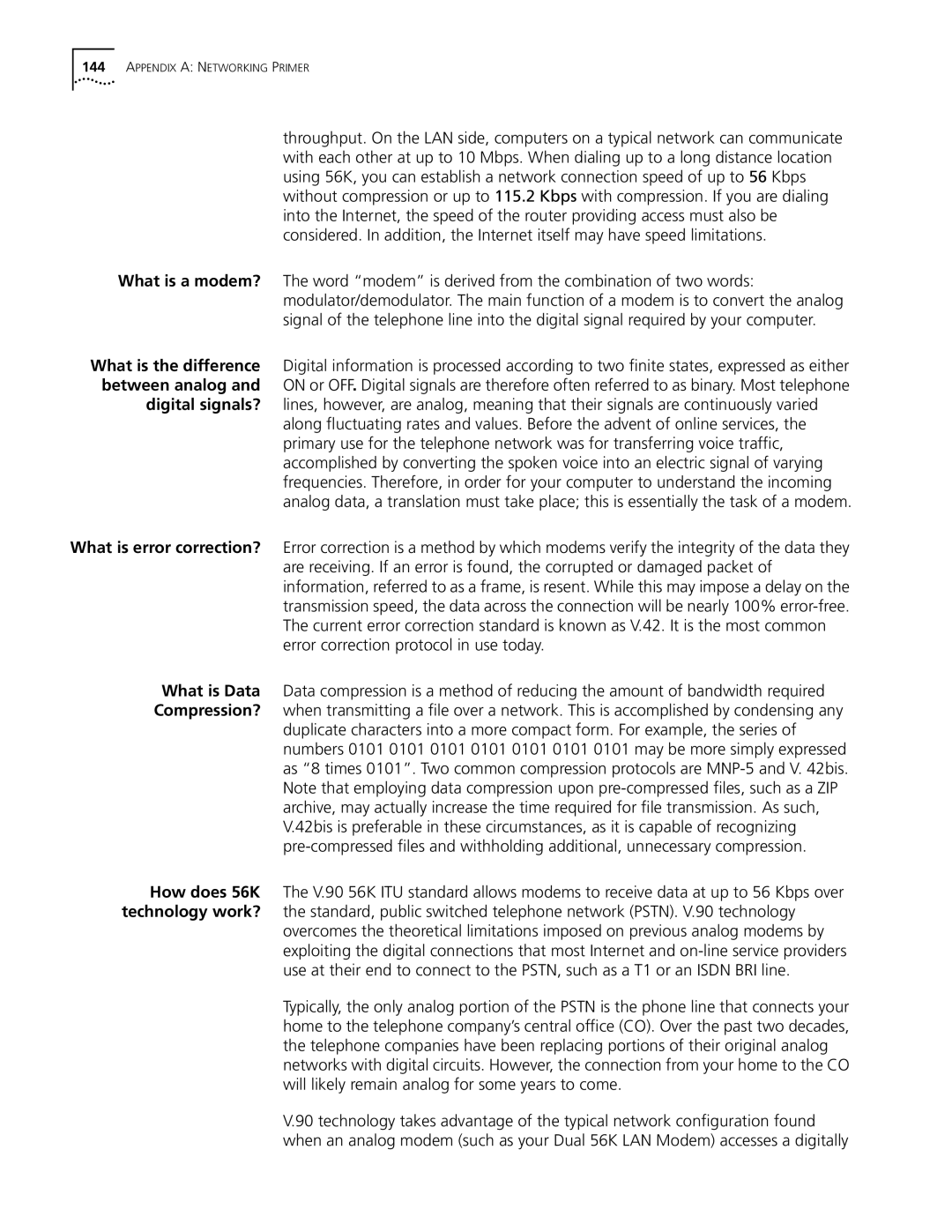144APPENDIX A: NETWORKING PRIMER
throughput. On the LAN side, computers on a typical network can communicate with each other at up to 10 Mbps. When dialing up to a long distance location using 56K, you can establish a network connection speed of up to 56 Kbps without compression or up to 115.2 Kbps with compression. If you are dialing into the Internet, the speed of the router providing access must also be considered. In addition, the Internet itself may have speed limitations.
What is a modem? The word “modem” is derived from the combination of two words: modulator/demodulator. The main function of a modem is to convert the analog signal of the telephone line into the digital signal required by your computer.
What is the difference Digital information is processed according to two finite states, expressed as either between analog and ON or OFF. Digital signals are therefore often referred to as binary. Most telephone
digital signals? lines, however, are analog, meaning that their signals are continuously varied along fluctuating rates and values. Before the advent of online services, the primary use for the telephone network was for transferring voice traffic, accomplished by converting the spoken voice into an electric signal of varying frequencies. Therefore, in order for your computer to understand the incoming analog data, a translation must take place; this is essentially the task of a modem.
What is error correction? Error correction is a method by which modems verify the integrity of the data they are receiving. If an error is found, the corrupted or damaged packet of information, referred to as a frame, is resent. While this may impose a delay on the transmission speed, the data across the connection will be nearly 100%
What is Data Data compression is a method of reducing the amount of bandwidth required Compression? when transmitting a file over a network. This is accomplished by condensing any
duplicate characters into a more compact form. For example, the series of numbers 0101 0101 0101 0101 0101 0101 0101 may be more simply expressed as “8 times 0101”. Two common compression protocols are
How does 56K The V.90 56K ITU standard allows modems to receive data at up to 56 Kbps over technology work? the standard, public switched telephone network (PSTN). V.90 technology
overcomes the theoretical limitations imposed on previous analog modems by exploiting the digital connections that most Internet and
Typically, the only analog portion of the PSTN is the phone line that connects your home to the telephone company’s central office (CO). Over the past two decades, the telephone companies have been replacing portions of their original analog networks with digital circuits. However, the connection from your home to the CO will likely remain analog for some years to come.
V.90 technology takes advantage of the typical network configuration found when an analog modem (such as your Dual 56K LAN Modem) accesses a digitally
